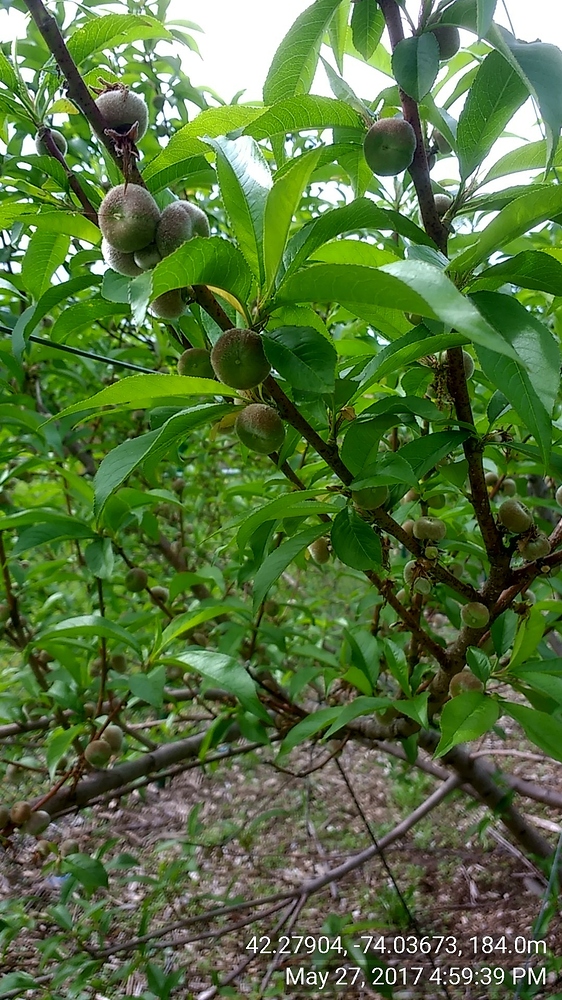I AM NOT POSTING THIS TO START A CLIMATE DISCUSSION
But, regardless of the causes of climate changes or whether we can do anything about it, the trajectory suggests that we will have to make adjustments to our growing habits whether as it heats up or as it cools off.
Solar Update June 2017–the sun is slumping and headed even lower
June 6, 2017
Solar cycle 24 has seen very low solar activity thus far, likely the lowest in 100 years.
Essay by David Archibald

Figure 1: F10.7 Flux 2014 – 2017
The F10.7 flux shows that over the last three and a half years the Sun has gone from solar maximum through a bounded decline to the current stage of the trail to minimum. Solar minimum is likely to be still three years away.

Figure 2: F10.7 Flux of Solar Cycles 19 to 24 aligned on month of minimum
Solar Cycle 24 is sitting at the lower bound of activity for solar cycles back to 1964, the start of Solar Cycle 19. From here to minimum though, it looks like Solar Cycle 24 will have much lower volatility than the solar cycles that preceded it.

Figure 3: Oulu Neutron Count 1964 – 2017
According to Svensmark’s theory, the neutron flux, with its effect on cloud cover and thus the Earth’s albedo, is one of the bigger climate drivers. For Solar Cycle 24, the neutron flux duly turned around and starting rising again in 2015, one year after solar maximum. It is a safe bet that the neutron flux is heading for a record high at solar minimum (+ one year) relative to the instrumental record.

Figure 4: Oulu Neutron Count aligned on month of solar minimum
The last weak solar cycle was Solar Cycle 20 which caused the 1970s Cooling Period. From the same stage in that cycle the neutron count flattened out to minimum. That could happen for Solar Cycle 24 but it is more likely to keep rising to minimum as 23 did and thus we can expect a count, at the end, of over 7,000.

Figure 5: F10.7 Flux and Oulu Neutron Count 1964 – 2017
If we conflate the F10.7 flux and the Oulu neutron count inverted, that shows they tracked each other closely up to 2004. Something changed in 2004 and since then the neutron count has been higher relative to its previously established correlation with the F10.7 flux.

Figure 6: Ap Index 1932 – 2017
Figure 6 shows that what changed in 2004 was the magnetic output of the Sun, shown in this instance by the Ap Index. Prior to that, there seemed to be a floor of activity at solar minima, just as the floor of activity for the F10.7 flux is 64. Three years to minimum and the Sun is now back to that level.

Figure 7: Solar Polar Field Strength 1976 – 2017
The best predictor of the amplitude of the next solar cycle is the strength of the solar polar magnetic fields at solar minimum. Figure 7, from the Wilcox Solar Observatory, shows that the solar polar magnetic fields at minimum have been weakening with each successive cycle.

Figure 8: Solar Polar Field Strength aligned on minimum strength at solar maximum
Solar Cycle 25 started from the blocks looking like it was going to be very weak and fulfill the prophecies of those predicting a Maunder-like experience for the 2020s. Then after a couple of years it caught up with Solar Cycle 24. Looking back over the previous three cycles, the solar polar field strength at this stage, three years before minimum, has been close to the value at minimum. On that assumption, Solar Cycle 25’s amplitude is likely to be two thirds of that of Solar Cycle 24, and thus 60. Further climatic cooling is therefore in store.

Figure 9: Sunspot Area 1985 – 2016
NASA has deigned to give us another nine months of sunspot area data by hemisphere, up to September 2016. The strong asymmetry between the northern and southern hemispheres continues. The fact that the hemispheric peaks of the last three cycles align indicate that there is a multi-decadal force operating in the vertical dimension. The chance that two sets of three points line up exactly by themselves is infinitesimal.

Figure 10: Hemispheric Sunspot Area and F10.7 Flux
As shown by Figure 10, total sunspot area tracks the F10.7 flux closely.
Mike









